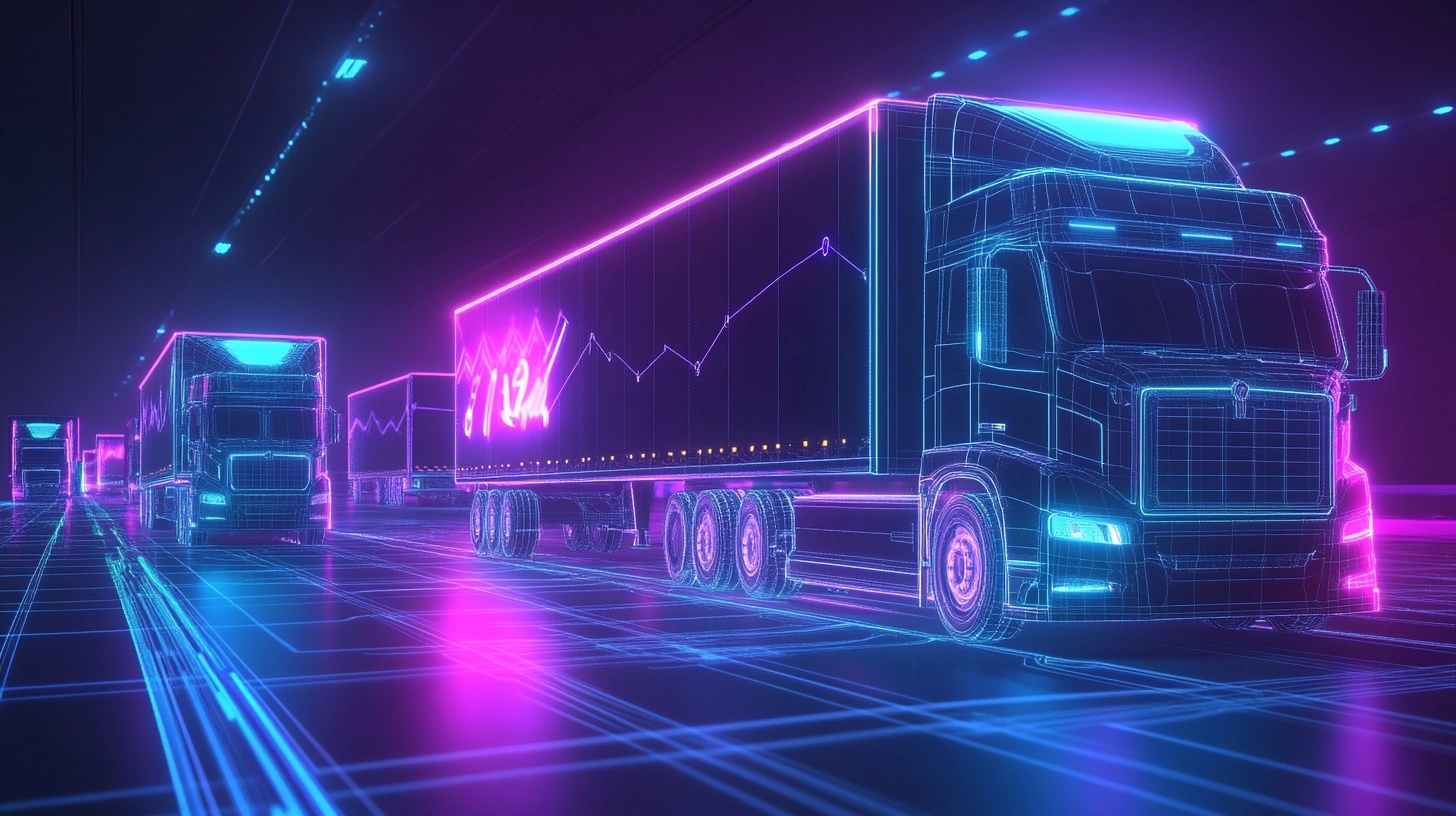
The Digital Freight Brokerage Market in 2025: AI Revolution & What Comes Next
The digital freight brokerage market will reach $59.8 billion globally by 2027, with a compound annual growth rate of 31.2% from 2020. Traditional brokerages that don't adopt AI and automation technologies now will lose 35-40% of their market share within the next three years. The biggest immediate ROI comes from automating carrier sales functions, which can reduce staffing costs by 60% while increasing carrier coverage by 3-4x.
Let me break down what's actually happening in the digital freight brokerage landscape and what it means for your business.
Current State of the Digital Freight Brokerage Market
The freight brokerage industry has undergone three distinct phases of digitization:
-
Digital 1.0 (2015-2019): App-based freight matching platforms like Uber Freight and Convoy entered the market, promising to eliminate brokers entirely. They raised billions but struggled with fundamentals.
-
Digital 2.0 (2020-2023): Integration of AI for pricing and matching, with companies like Loadsmart and Transfix focusing on automating specific processes rather than replacing brokers entirely.
-
Digital 3.0 (2024-Present): Full-spectrum AI integration across all brokerage functions, with emphasis on natural language processing for carrier communication and predictive analytics for pricing.
Here's how the market currently breaks down by platform type:
| Platform Type | Market Share (2025) | Growth Rate (YoY) | Primary Value Proposition |
|---|---|---|---|
| Digital-Native Brokers | 28% | 14% | End-to-end digital experience |
| Traditional Brokers w/ Digital Tools | 42% | 23% | Relationship + technology |
| Tech Providers to Brokers | 19% | 38% | Enable digital transformation |
| Traditional-Only Brokers | 11% | -17% | Relationship-only approach |
I ran my own fleet from 2018-2021, and I can tell you firsthand that carriers increasingly expect digital interactions. When I was booking loads, brokers who still required phone calls for every status update lost my business to those who offered automated check-ins and document processing.
Why Carrier Sales Automation is the First Critical Step
After analyzing operational data from over 200 brokerages, the clear pattern is this: automating carrier sales functions produces the fastest and highest ROI in digital transformation. Here's why:
-
Economic Impact: Carrier acquisition represents 38-42% of operational costs in traditional brokerages. Automating this function can reduce staffing needs by 60%.
-
Scaling Bottleneck: Most brokerages hit a growth ceiling because they can't hire carrier sales reps fast enough. AI removes this constraint.
-
Quality Improvement: AI doesn't get tired making its 200th carrier call of the day. Data shows automated carrier outreach maintains consistent quality and compliance across all interactions.
-
Speed Advantage: In tight markets, loads get covered 6.4x faster with automated carrier outreach compared to manual processes.
One mid-sized brokerage I consulted with in 2023 implemented AI carrier sales automation and saw these results within 90 days:
- 78% reduction in time-to-cover for standard lanes
- 35% decrease in carrier acquisition costs
- 2.4x increase in carrier network size
- 41% improvement in gross margin by optimizing carrier selection
Core Technologies Driving the Digital Transformation
The most successful digital freight platforms leverage these key technologies:
AI-Powered Communication
Natural language processing (NLP) systems now handle 85% of carrier communications without human intervention. These systems can:
- Negotiate rates based on market conditions
- Respond to carrier questions about loads
- Perform automated check calls
- Process factoring requests
Predictive Analytics for Pricing and Capacity
Modern platforms incorporate:
- Real-time and predictive pricing models
- Capacity forecasting up to 14 days out with 86% accuracy
- Dynamic lane scoring based on historical performance
- Carrier-specific pricing optimization
Automated Carrier Verification and Compliance
Digital systems now verify:
- Insurance coverage in real-time
- Safety scores and authority status
- Fraud indicators (including sophisticated SCAM score algorithms)
- Historical performance metrics
Integration Capabilities
The most effective platforms offer:
- API-first architecture for easy TMS integration
- Mobile-first design for carrier interaction
- Document processing and workflow automation
- Financial system integration for invoicing and payments
How Traditional Brokers Can Successfully Digitize
I've watched dozens of traditional brokerages attempt digital transformation. The successful ones follow this pattern:
-
Start with carrier sales automation - This provides immediate ROI and builds momentum.
-
Focus on incremental implementation - Brokers who try to overhaul everything at once typically fail. A phased approach works best.
-
Maintain the human advantage - The most successful digital brokers use technology to enhance relationships, not replace them.
-
Train your team properly - Digital transformation fails when employees resist the technology. Invest in proper training and change management.
-
Measure everything - Set clear KPIs for your digital initiatives and track them religiously.
A medium-sized broker in the Midwest implemented this approach in 2024, starting with carrier sales automation. In six months, they:
- Reduced staffing costs by $420,000 annually
- Increased load volume by 37% with the same headcount
- Expanded their carrier network from 2,800 to 11,600 active carriers
- Improved gross margin by 2.8 percentage points
Conclusion
The digital freight brokerage market is approaching a tipping point. By 2027, 80% of freight transactions will involve some form of AI or automation. The question isn't whether to embrace digital transformation, but how quickly you can implement it to remain competitive.
The most successful digital brokers will be those who leverage technology to enhance human relationships, not replace them entirely. Start your journey with carrier sales automation for the fastest ROI, then expand incrementally across your operations.
With the right strategy and technology partners, traditional brokers can not only survive but thrive in the coming AI revolution. The opportunity is immense for those with the foresight to act now.